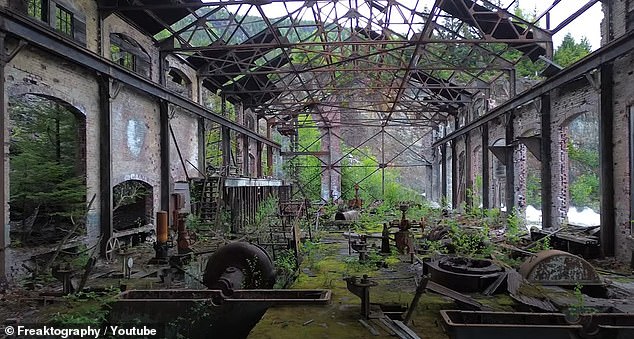A fascinating documentary takes viewers on a tour of Canada’s largest abandoned town, which once housed 3,000 people and then fell into ruin in 1935.
Urban explorer Dave Conlon, who runs the YouTube channel Freaktographyventured into the wilderness of British Columbia to explore an old mining base known as Anyox.
In the film’s introduction, it gives some background on the history of the distant town, explaining that it was originally built in 1912 by a company called Granby Consolidated Mining, Smelting and Power Company to “mine and produce copper, silver and gold.”
As the film shows a mix of old photographs and modern footage, it continues: “During its 25 years of existence, the Anyox mines and smelters produced four tonnes of gold, 230 tonnes of silver and 340,000 tonnes of copper.”
During the production process, Dave says steam and electric locomotives were used to transport large quantities of ore from the mine to the crusher, where it was reduced in size.
Urban explorer Dave Conlon, who runs the YouTube channel Freaktography, ventured into the wilderness of British Columbia to explore a former mining base known as Anyox.
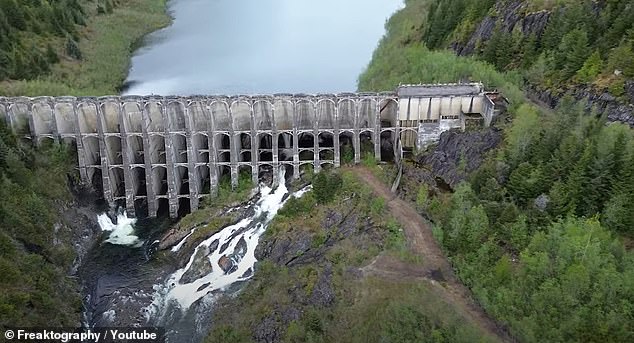
The town was originally built in 1912 by a company called Granby Consolidated Mining, Smelting and Power Company for mining. Above, the impressive concrete dam
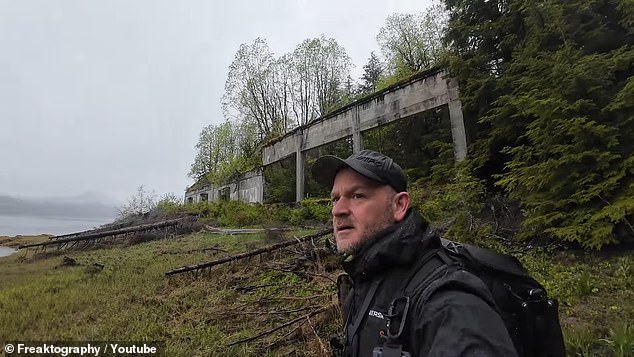
To visit Anyox, Dave enlisted the help of local tour guide Rob Bryce.
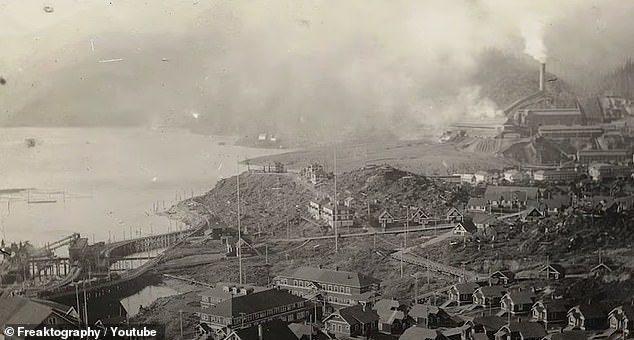
‘During its 25 years of existence, Anyox’s mines and smelters produced four tonnes of gold, 230 tonnes of silver and 340,000 tonnes of copper,’ Dave explains.
The final part of the process involved transporting the crushed ore to the offshore concentrator, where it was transformed into usable raw material.
At its peak, Anyox was processing 5,400 tonnes of ore a day, Dave says.
To power the operation, a concrete hydroelectric dam was installed, which at 48 metres high was the tallest structure of its kind in Canada for many years.
There was also of coal generators at the mining site.
To visit Anyox, Dave enlisted the help of local tour guide Rob Bryce.
They took a four-hour drive from the town of Terrace to an ancient village called Kitsault, and from there, they took a boat ride to their final destination.
Describing what he saw as they approached the abandoned village, Dave said: ‘It wouldn’t be long until we saw the tall brick chimney sticking out above the trees.
‘From there I was finally able to see with my own eyes the abandoned coke plant that greets all visitors to Anyox.
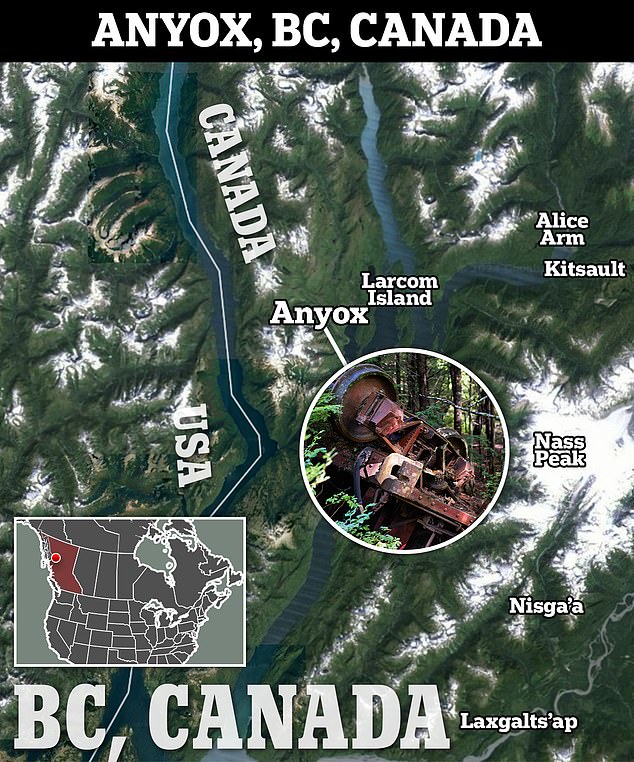
They took a four-hour drive from the town of Terrace to an ancient village called Kitsault, and from there, they took a boat ride to their final destination.
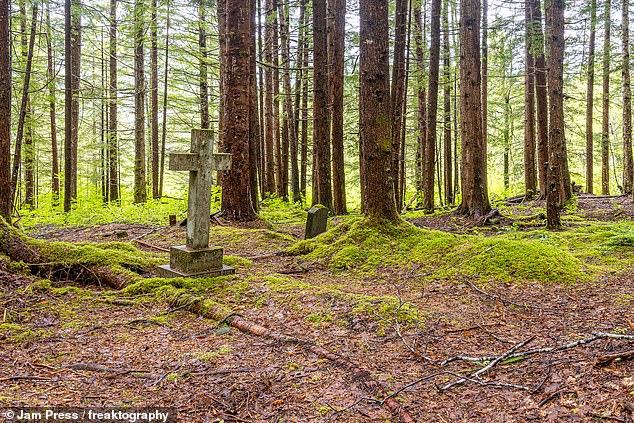
Dave says one of the most haunting parts of Anyox is the cemetery. At one point, he finds a gravestone from 1935 belonging to a man who died aged 70.
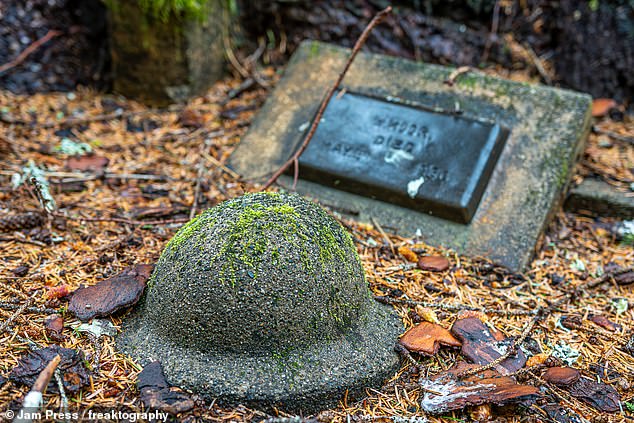
There are also several graves belonging to World War I soldiers who returned to Anyox after military service to “live out their lives” and work there.
‘(This) was followed by the general store, the power plant and then Granby Bay and the mountains surrounding all of Anyox.’
The two men were met by Kevin Krogstad and Robbie Nutter, who are the sole occupants of Anyox and are employed there to help move away surplus slag.
To move around the vast site they used all-terrain vehicles.
Some of the sites Dave visits in the video include the dilapidated power station, which once “powered the mines, smelters and homes of Anyox,” the secondary power plant which is in an even more disheveled state, what remains of the general store, and the “creepy” graveyard.
As he wanders, the filmmaker finds remnants of past inhabitants, including rusty bed frames and even an old car.
He says one of the most disconcerting parts of Anyox is the graveyard.
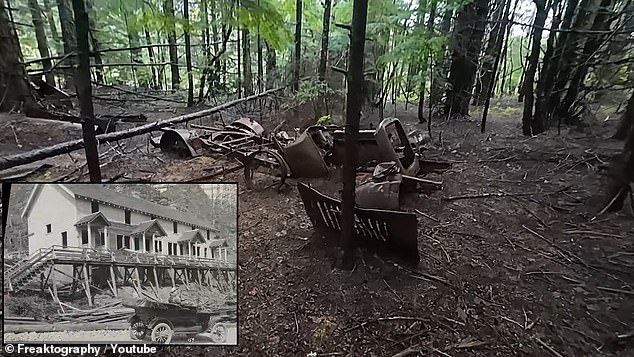
As he wanders, the filmmaker finds remnants of past inhabitants, including rusty bed frames and even an old car.
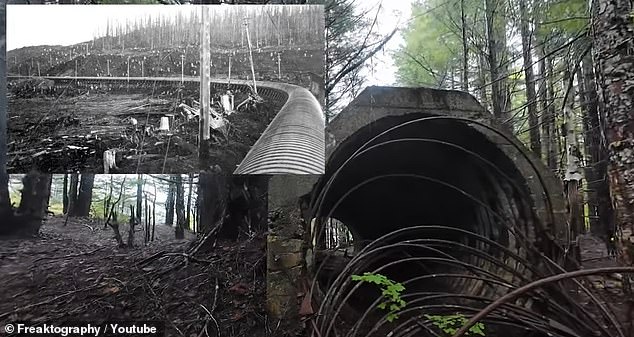
A fire destroyed the remains of Anyox, leaving behind only the main concrete and steel structures that are still evident today.
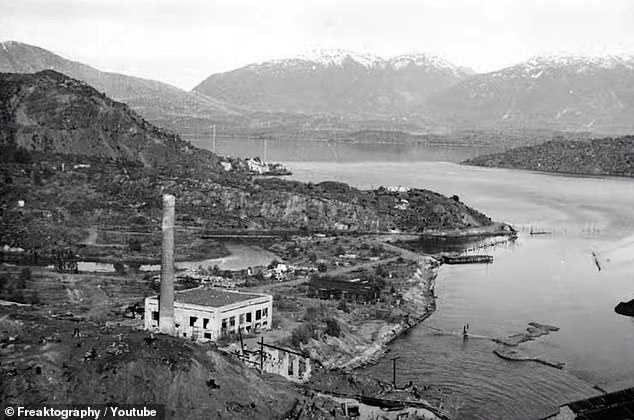
During its operation, 480 births, 160 marriages and 320 deaths occurred in the city.
At one point he finds a tombstone from 1935 belonging to a man who died at the age of 70, while many of the graves are unmarked.
There are also several graves belonging to World War I soldiers who returned to Anyox after military service to “live out their lives” and work there.
Of the 400 men who left, less than 60 returned.
Those who returned were promised a soldier’s burial by the town’s owners, and their graves are marked by commemorative concrete helmets and cement borders.
Giving a broader insight into what life was like in Anyox and the hardships they had to endure, Dave says: ‘The copper mining town… was in operation between 1914 and 1935.
‘During this time there were 480 births, 160 marriages and 320 deaths.
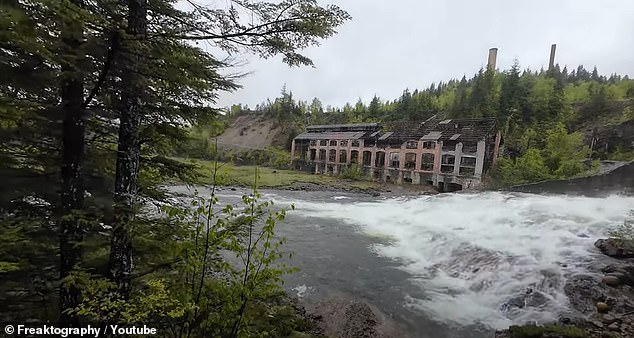
Many viewers have thanked Dave for sharing his video tour. One commenter wrote: “It was an excellent exploration. Great adventure, the falls, the scenery, breathtaking.”
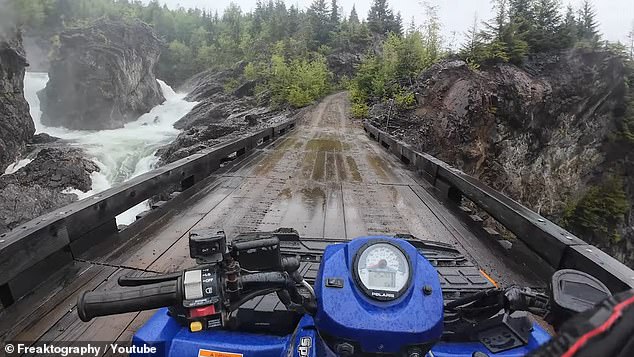
To explore the vast site, they used all-terrain vehicles before stopping to explore on foot.
‘Many of the deaths at Anyox were stillborn babies and infant deaths, largely due to toxic emissions from the smelter and large-scale cyanide waste.
‘Also, the 1918 Spanish flu pandemic is evident in the number of deaths (here) at that time.’
According to an article on the University of British Columbia website, Anyox ceased operations in 1935 due to the collapse of copper prices in the wake of the Great Depression.
The author explains: ‘By early 1935, about 50 million kilograms of unsold copper, the equivalent of three years’ production, were piled up near the port.
‘When the mining operations closed on July 31, 1935 and the workers were laid off, all of the town’s residents lost their source of income and were left homeless virtually overnight.
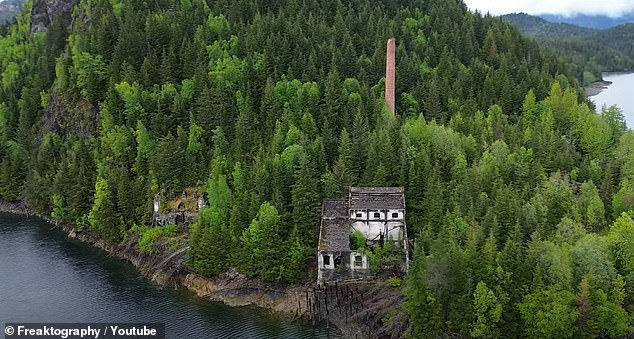
According to an article on the University of British Columbia website, Anyox ceased operations in 1935 due to a collapse in copper prices following the Great Depression.
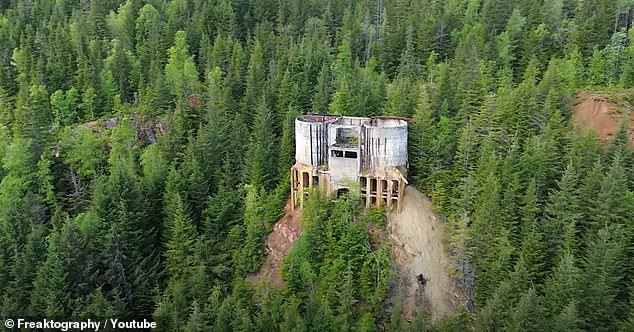
To make matters worse, a forest fire broke out in 1946.
‘As for buildings and mining sites, all the materials that were available for salvage were dismantled and sent to other cities and towns.’
To make matters worse, a forest fire broke out in 1946. Anyox.com He notes that the fire “scorched the remains of Anyox, leaving behind only the main concrete and steel structures that can still be seen today.”
Many viewers have thanked Dave for sharing his journey on video.
One commenter wrote: “It was an excellent exploration. A fantastic adventure, the falls (and) the scenery (are) stunning. Great job!”
Another viewer revealed his ties to the place, commenting: “There’s a lot of family history. My father was a teenager at Anyox and my grandfather was the general manager of the store, along with my aunt who was the accountant.”


